First Blood (continued)I Corps Tactical Zone Republic of South Vietnam 10/12/64: Reveille went at 0400 hours again. We had a launch at 0730 hauling Vietnamese troops and two med-evacs. The CRT that I'm on went with the med-evacs to Kham Duc. I got to be radio man on the PRC-10 because I was the only one on this team that knew how to use it. PFC Watson is being checked out on it. At about 1100 hours I heard "One down! One down!" on the radio. I called Lieutenant Wilson over but I kept the radio. The pilot of the chopper in trouble radioed that he was going to try to get back to DaNang. It was Yankee Mike 19. Yankee Mike 4 was assigned to accompany the troubled plane back YM19 couldn't make it back. It landed in a clearing and the accompanying chopper came it to pick up the crew, weapons and some of the gear from YM19. While YM4 was trying to land to do the rescue it settled on the slope of a hill. The chopper started to lose power and all the pilot's attempt to boost the RPMs didn't work and the chopper tipped over on the side of the hill. They pulled the weapons and as much of the gear out of the chopper that they could and then burned YM19. [winkel]
Just after dawn the first strike mission began by transporting the Vietnamese soldiers to a site at An Boung, located ten miles west of Hue Citadel. It was there that an estimated Viet Cong battalion was under small arms fire nearby. Only fragmentary information was available at take-off and the mission briefing was conducted enroute by the squadron commander, LtCol Joseph Koler, Jr., of Tustin, California. Flying in extremely low visibility, the Marines approached the tiny landing zone (LZ) on a sloping hillside just as a pre-strike mission was compled by US Army armed helicopters and attack aircraft. The hillside was burning in spots and smoke from the impact area drifted upward as the first two Marine choppers settled into the head-high elephant wood on the finger of the ridge. Boiling out of the helicopters, the Vietnamese formed out into a skirmish line and moved down toward the valley and Sun Qua to support the unit already engaged in that vicinity. The flying Leathernecks had no sooner landed back at DaNang when they received an urgent mission to evacuate twelve wounded from the outpost at Phouc Lam. Before they could become airborne casualties had climbed to nineteen.  At Phouc Lam, the LZ could only accomodate one helicopter at a time. Just as the last wounded Vietnamese was loaded aboard a mortar round exploded nearby to send a piece of shrapnel tearing through the tail section of "Yankee Mike 19" just behind the gunner. No one was injured, and the pilot, 1stLt Bill Martin, of Carey, Mississippi, returned with the wounded to the hospital, completing the evacuation. In the meanwhile, every available pilot and crew set out for the second strike of the day by lifting reinforcements into the outpost at Phouc Lam.
At Phouc Lam, the LZ could only accomodate one helicopter at a time. Just as the last wounded Vietnamese was loaded aboard a mortar round exploded nearby to send a piece of shrapnel tearing through the tail section of "Yankee Mike 19" just behind the gunner. No one was injured, and the pilot, 1stLt Bill Martin, of Carey, Mississippi, returned with the wounded to the hospital, completing the evacuation. In the meanwhile, every available pilot and crew set out for the second strike of the day by lifting reinforcements into the outpost at Phouc Lam.The troop delivery was without further incident though some small arms fire continued around the position. All of the Marines in the DaNang squadron agreed that it was a good day's work. [WO-1 Rob Robinson, MAG-16 IFO]
Medevac in the morning - Lieutenants Montgomery and Rudolfs piloting. Medevac again in the afternoon - Lieutenants Mack and Chilewski piloting. Aircraft hit by ground fire. [mayher]
10/15/64: Evacuated a small village of Germans. [mckee] The VC have been trying pretty hard to infiltrate the ARVN line. The ARVN have been setting off three flares at a time at the southwest end of the base. They also had to evacuate a village. When we get these med-evac planes back that carried some dead people, it stinks. Also after they haul cargo, it stinks from a certain food that smells like shit. I could throw up from the smell...and they eat the stuff. [winkel]
10/16/64: Got promoted to lance corporal (E-3) after having twenty-two and a half months in grade as a PFC (E-2). Besides that I can't think of anything else to say except that we got paid today. The most one can get paid here $100 a month. I don't get much more than that so I really don't mind. [winkel]
Having enough money to go out and enjoy the pleasures of DaNang was not much of a concern for me. As a lance corporal (E-3) with over three years in service, my pay, along with overseas pay and extra hazardous duty pay, amounted to over $200 a month. Since we could only draw $100 a month I could save the remainder of my salary. Things were cheap enough at the post exchanges (PX) at the compound and at the Air Force side of the base. A pack of American cigarettes (highly coveted by the Vietnamese) was fifteen cents. The laundering of our uniforms cost each of us enlisted personnel two dollars every two weeks. Drinks at the club cost twenty to fifty cents.
10/21/64: Flew General Krulak, and got my gamma globin shot. [mckee] Lieutenant General Victor H. Krulak, Commanding General, Fleet Marine Force, Pacific, probably influenced the course of America's involvement in Vietnam during the earlier years more than any other general on active duty at the time. Although he did not command any unit in Vietnam directly, he oversaw the day to day operations of the conflict in Vietnam from Washington and Hawaii as the Special Assistant for Counterinsurgency and Special Activities, reporting directly to the military Joint Chiefs of Staff and to Secretary of Defense Robert McNamara. He also was the chief author of Operation Plan 34A, the outline for "what it would take to win the war." General Krulak's controversial influence in the prosecution of the war in Vietnam is beyond the scope of this squadron's perspective of historical events. Many historical works describe this man as diminutive in stature, as if a person's height should reflect upon his ability to be a leader, but we knew Victor Krulak as a brave and intelligent Marine who cared genuinely for the well-being of Marines. [delrosario]
10/23/64: There was machine-gun fire in the valley between the Beung and Sun Qua, 700 yards to the west and 400 feet straight down the hill. Prior to December 1964, bonus pay for duty in a combat zone was not automatically awarded to every U.S. serviceman in Vietnam. In order to qualify for combat pay, which at that time was $55.00 a month, the individual had to be exposed to hostile fire for at least six days of that calendar month, or be wounded or killed during that particular month. If I remember correctly, that October, the Marines assigned to compound security (Delta Company, First Battalion, Third Marines) had only acquired 3 or 4 days of hostile fire directed at them and they were beginning to worry that they would not be qualifying for the $55.00. It was rumored that incidents were "fabricated" in order to make it appear that they had encountered a hostile force that required them to fire, thus earning a "shooting day". I would consider a rabid dog hostile. [delrosario]
We first heard about it in the air as we neared Kam Duc. At that distance the signal was weak and the message garbled, but there was no mistaking what it meant. 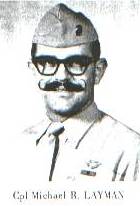 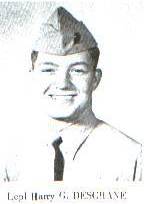
10/26/64: YM-10 went down. The copilot and Stevens were wounded in the leg. altogether three planes were hit. [mckee]
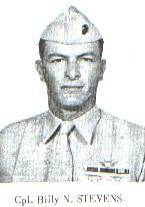
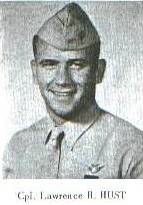
I found out at about 1600 hours that one of our planes that Cpl. Stevens crew chiefs and Cpl. Hust flew gunner on got hit by ground fire while they were circling in to drop supplies. The co-pilot, Capt. Wheeler, from a different squadron, got wounded, I believe, in the leg. They were in YM-14 with Capt. Boemerman as HAC (helicopter aircraft commander). There was blood all over the instrument panel, windshield, floor, and the seat. There is also a big hole in the seat. It looks like it was a .50 caliber round. The round also damaged two rotor blades. [winkel]
Corpsman Arthur Corbett: I was the corpsman on the chopper that got shot up at Payne Compound. The pilot (Capt. Wheeler) had asked me to wait on the ground while he took some Vietnamese "dignitaries" down the road on his chopper. I left my bag on the chopper and went into Payne Compound to look in the refrigerator for some food. As soon as I opened the door and within several minutes of the lift-off, they called me back to the landing site to take care of the pilot. A .50 caliber round had gone through the pilot's leg and also directly through the middle of the seat I was sitting in minutes before. My medical bag on the seat next to it was full of shrapnel.
Art 10/28/64: Our CRT was suppose to fly today but there was an overcast sky at the Kham Duc landing zone, so they didn't fly in. we only flew troops from DaNang Air Base to some place out in the boonies so the CRT was not needed. We are suppose to go up tomorrow. Among the CRT, only Lt. Wilson has six missions this month. Most of us have four, some have five, and a few have three. Some general sent a letter to First Marine Aircraft Wing to entitle our whole compound for combat pay because we have been receiving fire every night plus hand grenades have been thrown over the wall at the compound. I made one more rappell off the tower today. [winkel] 10/29/64: Full schedule of resupply. Weather closed in and had to fly by at 200 feet. Landed with only about 150 lbs. of fuel left. [mckee] PFC Popkowski was bitten by a rat last night in the showers. He has to get 14 rabies shots. I guess that's why they finally put lights in the shower area. [winkel] 10/30/64: I found out today, at the last count, since arriving at Shu Fly, we have flown a total of 1,495.8 hours. 1,241.6 hours have been by UH-34Ds. The rest by OEs. I believe it is a record. As of today we have been here only 23 days. Stateside the average squadron flew 600 hours a month. A few times our squadron flew a little more than 1,000 hours a month. [winkel]
10/31/64: I finally got my sixth mission of the month in today, and so did everyone else on the Combat Recovery Team. Some even got seven. My team went with a chopper on a resupply and troop rotation mission on top of a mountain. The camp is surrounded by VC and they have a .50 caliber machinegun out there somewhere. That is where the captain was shot last week. [winkel] She asked me to tell her all and said she'd understand. So I wrote, "Nothing much - had a strike just yesterday - sorry gal, there's nothing else to say." Oh yes, we're burning bridges to those years we left behind. We're burning all the cobwebs in the dungeons of our mind. The letters, and the poems, and the haunting melodies - we'll burn them with our painful memories. 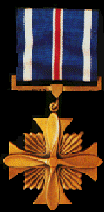 I can't recall now the name of the ARVN camp or LZ, but it was on the afternoon of the 31st of October. Captain Dittmeier was leading our section of four helicopters. The camp had been under attack by the VC for several days and was in danger of being overrun. Heavy mortar fire was pounding the base as we began our emergency evacuation. As each copter came in large concentration of machinegun fire followed its descent, loading, and take-off. My copilot, 1stLt McEwen, and I knew that we had no choice but to run that gauntlet of fire if we were to get those ARVNs out of there. We were the last to go in. After we took off with our load of Vietnamese troops, the camp radio went silent. [Reno, interview 8/24/00]
I can't recall now the name of the ARVN camp or LZ, but it was on the afternoon of the 31st of October. Captain Dittmeier was leading our section of four helicopters. The camp had been under attack by the VC for several days and was in danger of being overrun. Heavy mortar fire was pounding the base as we began our emergency evacuation. As each copter came in large concentration of machinegun fire followed its descent, loading, and take-off. My copilot, 1stLt McEwen, and I knew that we had no choice but to run that gauntlet of fire if we were to get those ARVNs out of there. We were the last to go in. After we took off with our load of Vietnamese troops, the camp radio went silent. [Reno, interview 8/24/00]
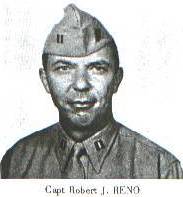
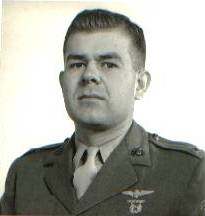
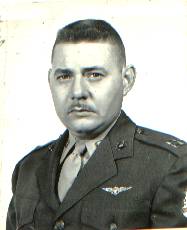
(From Frank Mayher's Log) October 9-31, 1964: flew 24 missions, 1 hit. |
MARINE MEDIUM HELICOPTER SQUADRON in Vietnam: History
Pre-Vietnam 1964
NOV 64
DEC 64
JAN 65
FEB 65
MAR 65
APR 65
MAY 65
JUN 65
JUL 65
AUG 65 and After
Enrique B. del Rosario
Copyright © 2000
marinehelicopters@lycos.com